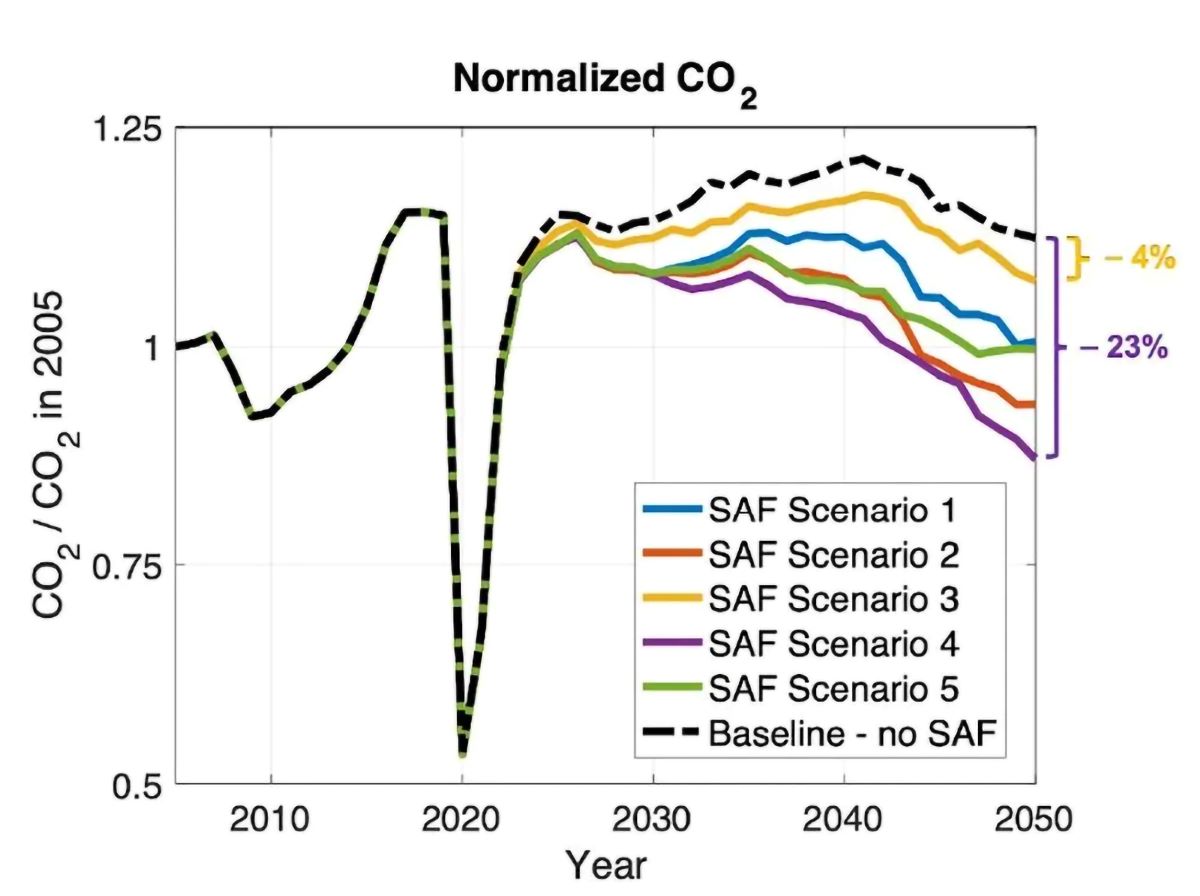
The aviation industry accounts for about 2.5 percent of global carbon emissions, and all hands are on deck to lower the number. European aviation set a goal and roadmap to reach net-zero CO2 emissions by 2050. The International Civil Aviation Organization created incentives for airlines to use sustainable aviation fuel (SAF) to keep sector emissions at their 2020 level.
SAF is a blend of biofuels and traditional jet fuels. It has a lower net carbon footprint because it is grown from crops that absorb carbon dioxide. But it costs more to produce than jet fuel, and the ultimate production capacity is uncertain, says William Crossley, the Uhrig & Vournas Head of Aeronautics and Astronautics.
Looking to the future of this technology, Crossley thought it was important to evaluate how effective SAF could be at lessening carbon emissions. The results were encouraging, but not a silver bullet.
His team developed a simulation, called the Fleet-Level Environmental Evaluation Tool (FLEET), that uses an operations-based model to predict emissions of future airline operations. It looks at varying demand scenarios, improvement of aircraft technology, levels of biofuel utilization, and effects of biofuel pricing on what passengers pay for tickets.

This chart shows the projected CO2 output from the aviation industry over various scenarios. Purdue’s model shows that sustainable aviation fuels could reduce net carbon emissions by between 4% and 23% by 2050.
“This modeling system allowed us to simulate different scenarios of SAF use and travel demand. FLEET’s optimization algorithm balances maximizing airline profit with fulfilling passenger demand and addressing operational constraints. The model even considers several new technologies that airlines are expected to adopt to help cut fuel consumption,” Crossley says.
The team ran the FLEET simulation for 2005-2050, accounting for differing post-pandemic demand recovery scenarios. All the SAF scenarios showed a reduction in CO2 by 2050, ranging from 4 percent to 23 percent lower than baseline emissions.
“Even if airlines experience and meet higher passenger demand for travel, their carbon emissions still could be lower through the use of SAF than if they use conventional jet fuel,” Crossley says. “The up-to-23 percent decrease is not enough on its own to achieve aggressive CO2 reduction goals. However, it shows that SAF is one more tool in aviation’s toolbox — and a very valuable one — in addressing and mitigating global temperature growth.